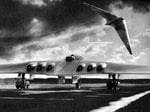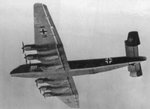Gemhorse said:Basically though, Germany failed in the heavy-bomber stakes, not through any bad designs or such, they indeed had some bloody good designs - They failed directly through the dickhead in charge, Hitler, who I guess was consumed by the success of the earlier ''Blitzkreig'' strategy, not forseeing that the day would come when a Bomber Offensive combined with Air Superiority was the only way to win a war....Thank God the Allies were thinking clearly, or we would've been in trouble if some of those good designs saw fruition.....
That you are absolutely correct. They had decent designs but they did not start any soon eneogh. They needed to have a good heavy bomber in service in numbers before the war started.





